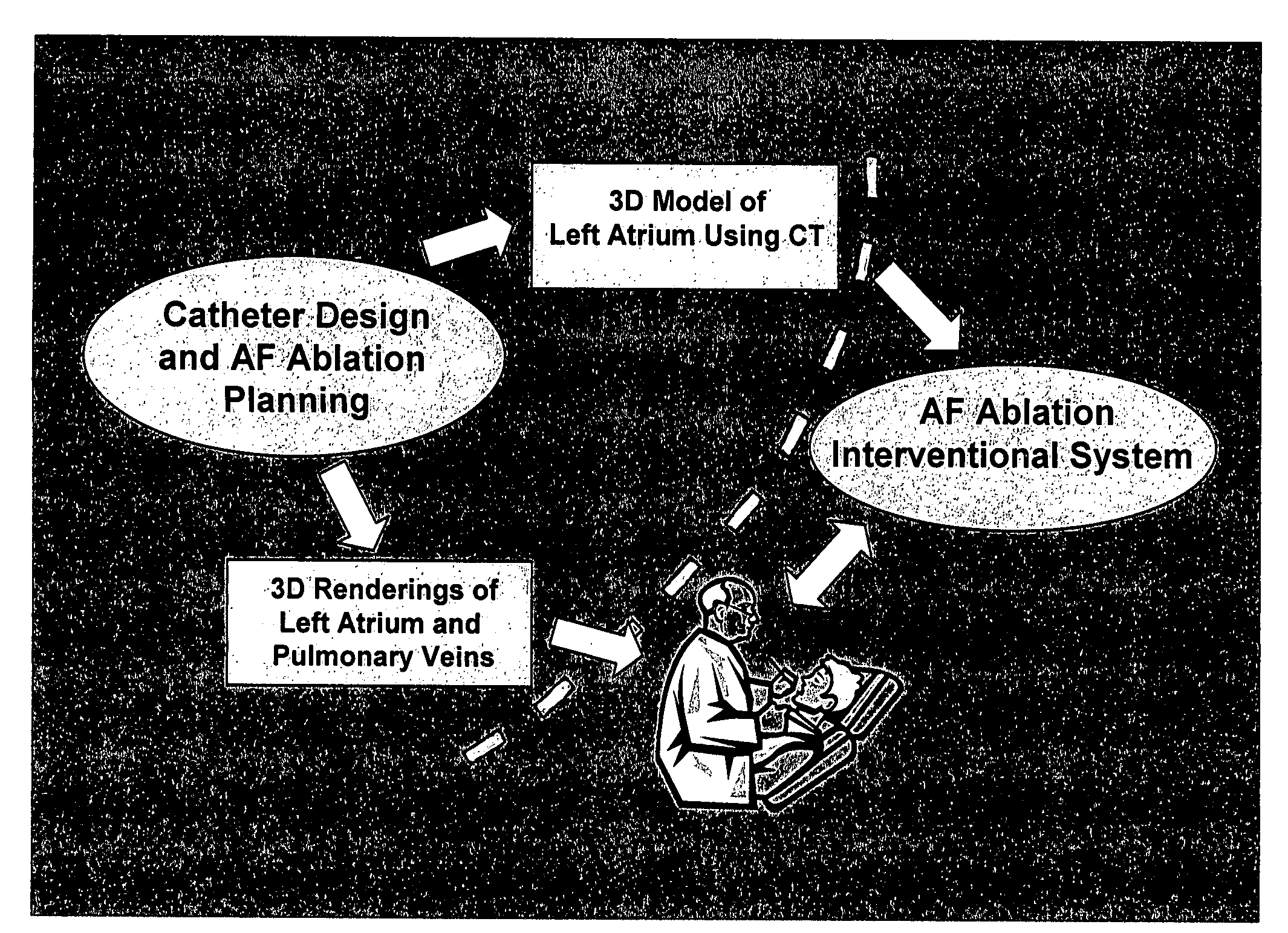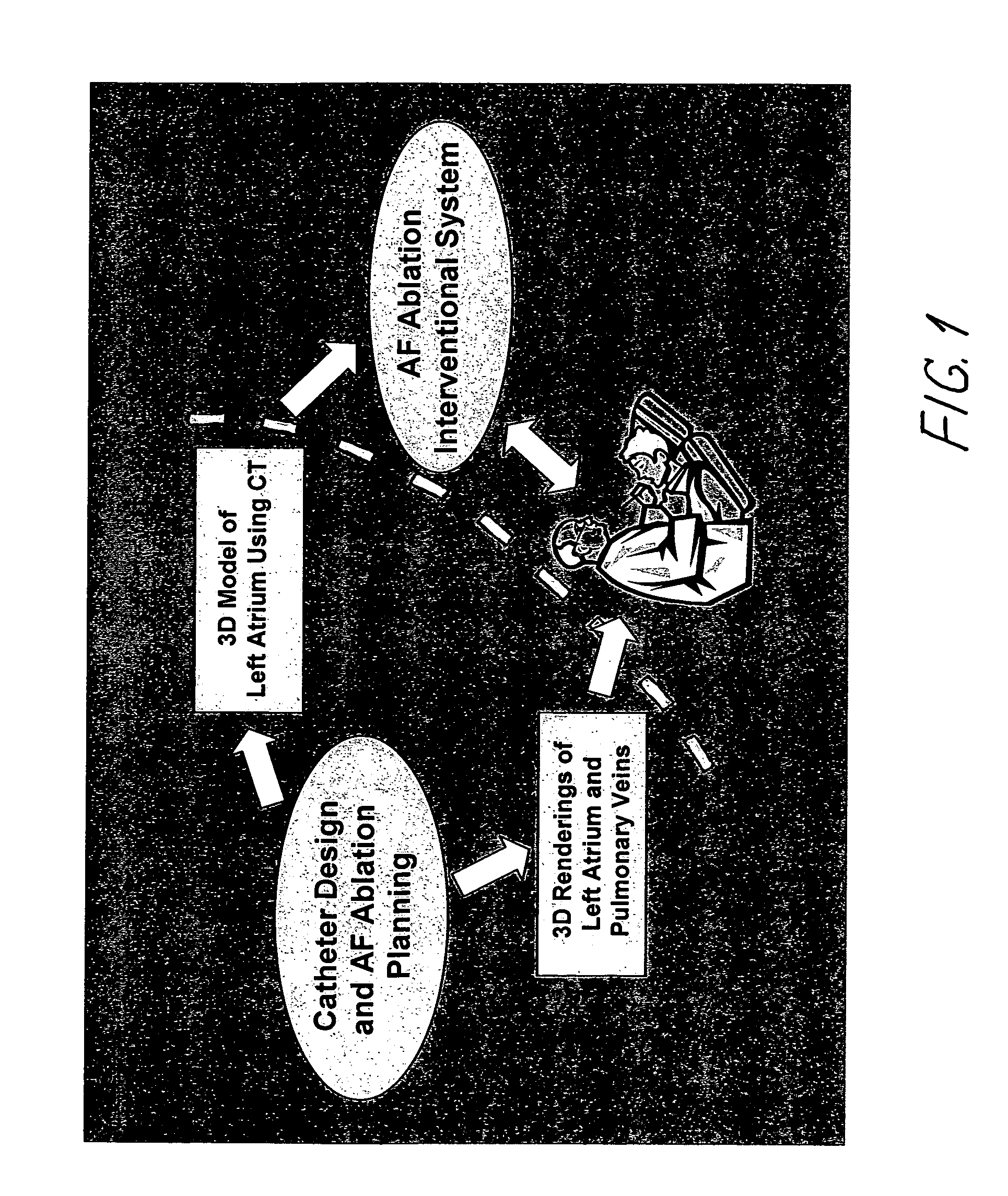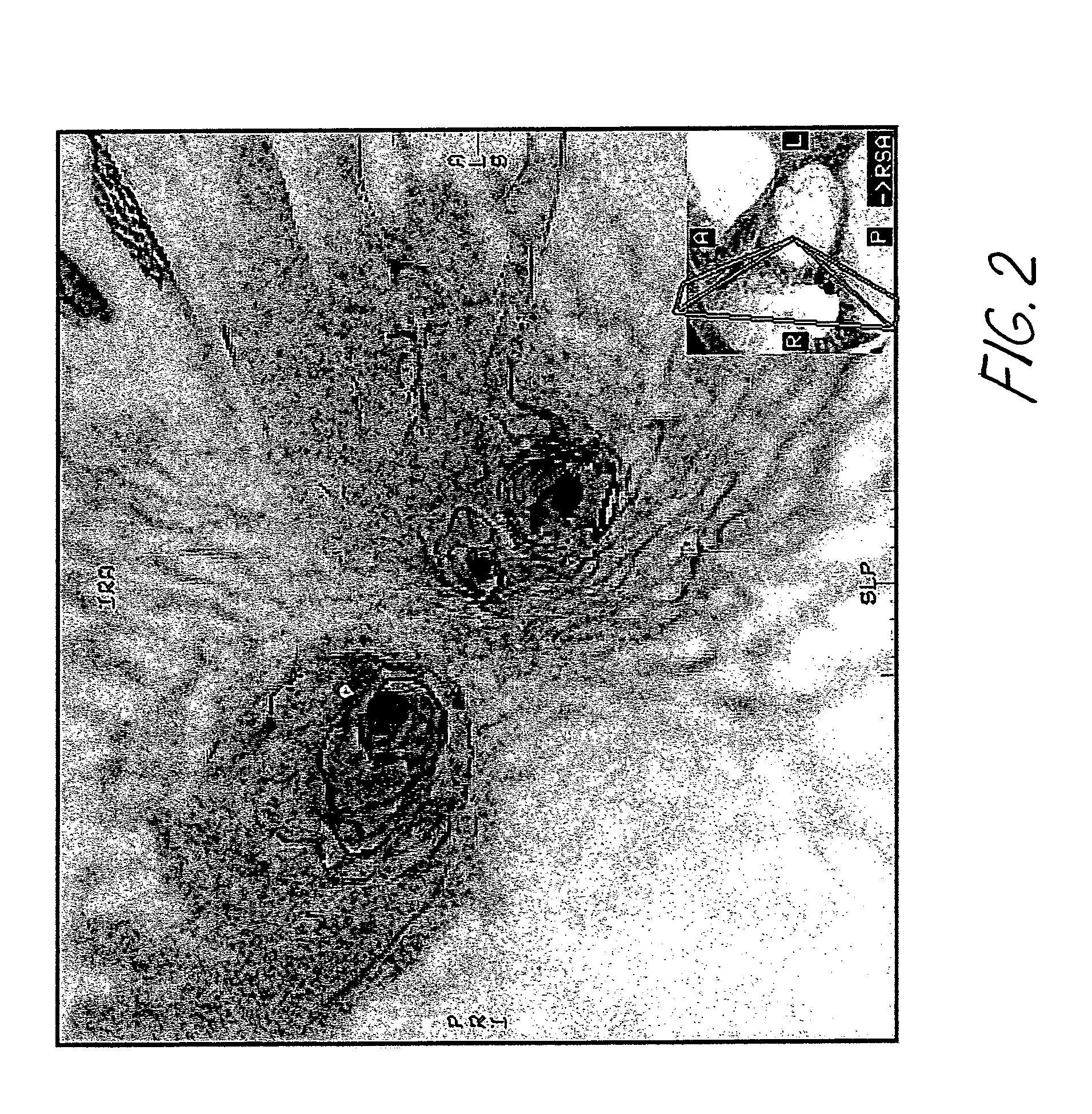Method for pulmonary vein isolation and catheter ablation of other structures in the left atrium in atrial fibrillation
a technology of pulmonary veins and catheters, applied in the field of catheter design, can solve the problems of high incidence of medically significant complications in patients with atrial fibrillation, cumbersome and inadequate mapping methods, and long and inadequate radiofrequency ablation methods,
- Summary
- Abstract
- Description
- Claims
- Application Information
AI Technical Summary
Benefits of technology
Problems solved by technology
Method used
Image
Examples
Embodiment Construction
[0025]Referring first to FIG. 1, thereshown is a diagram illustrating the overview of an exemplary process in which a cardiac CT scan is performed to create a 3-D image of the left atrium of a patient's heart. Once the 3-D image of the left atrium is acquired, the image can be used for interventional planning for such things as atrial fibrillation (AF) ablation. The volume of patient data acquired using the CT imaging is optimized for the left atrium and cardiac gating is performed to acquire consecutive axial images from the same phase of the cardiac cycle. Once the CT imaging has been completed, a 3-D reconstruction of the left atrium is created.
[0026]Once the 3-D reconstruction of the left atrium is created, a segmentation process is used to extract the inner surface of the left atrium, as illustrated in FIG. 2. As shown in FIG. 2, the topographic contours of the left atrium can be readily viewed, as well as the ostium between two pulmonary veins and the left atrium. The 3-D and ...
PUM
 Login to View More
Login to View More Abstract
Description
Claims
Application Information
 Login to View More
Login to View More - R&D
- Intellectual Property
- Life Sciences
- Materials
- Tech Scout
- Unparalleled Data Quality
- Higher Quality Content
- 60% Fewer Hallucinations
Browse by: Latest US Patents, China's latest patents, Technical Efficacy Thesaurus, Application Domain, Technology Topic, Popular Technical Reports.
© 2025 PatSnap. All rights reserved.Legal|Privacy policy|Modern Slavery Act Transparency Statement|Sitemap|About US| Contact US: help@patsnap.com



